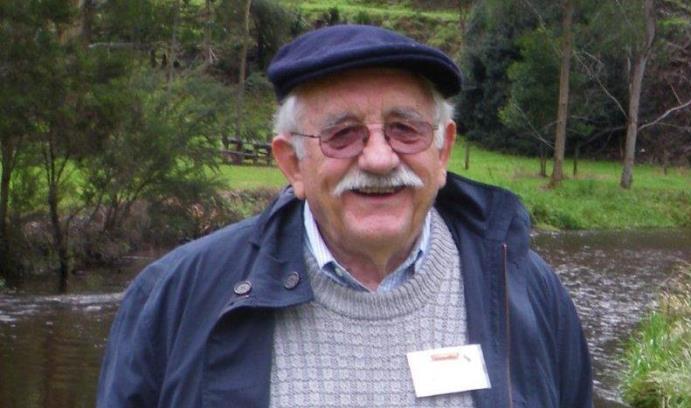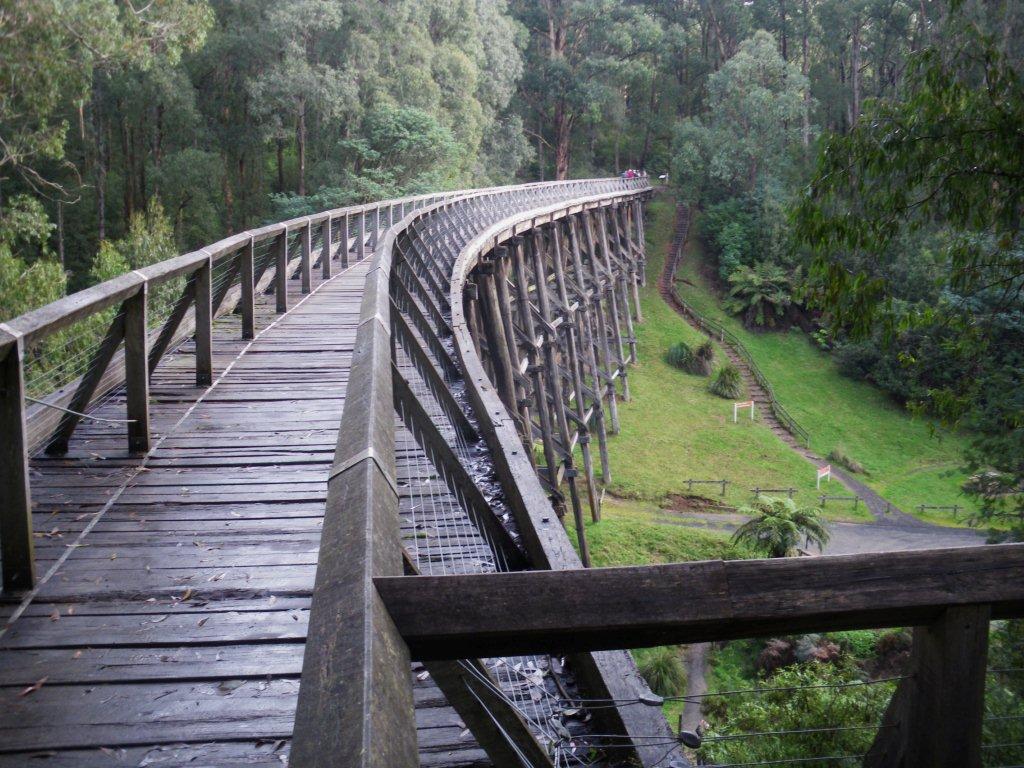A bridge to the past

Maxwell Lay ‘64 Ph.D., an engineer, author and highway historian, recently received the Peter Nicol Russell Medal, the most prestigious award granted by the Institution of Engineers Australia.
Maxwell Lay ‘64 Ph.D. has won one of the world’s top engineering honors for his accomplishments in the welding of steel structures, the design and construction of highway infrastructure, and the maintenance of heritage roads.
Lay, who earned a doctorate in civil engineering from Lehigh, recently received the Peter Nicol Russell Medal from the Institution of Engineers Australia (IEAust). He was cited as an “eminent expert in the fields of structural engineering, road and transport engineering, and information technology.”
The Russell Medal, the most prestigious honor given by IEAust, was established in 1923 and named for Sir Peter Nicol Russell (1816-1905), an industrialist and philanthropist. It is awarded to a Fellow of the Institution who has made a “notable contribution to the science and/or practice of engineering in Australia.”
IEAust, which was formed in 1919, represents all engineering disciplines and has more than 100,000 members.
Lay, the author of six books and more than 760 journal articles, completed bachelor’s and master’s degrees from Melbourne University in his native Australia before enrolling at Lehigh. Under the guidance of Professor Ted Galambos, he wrote his Ph.D. thesis on “The static load-deformation behavior of planar steel structures.” Another professor who influenced him, he says, was Alex Ostapenko, now a professor emeritus of structural engineering.
“At the time,” Lay recounted several years ago, “Fritz Lab in the department of civil engineering had a world-renowned research group working on new methods to design steel structures. It involved both theory and testing and was closely linked to the steel industry.
“I had read some of their published work and it seemed closely aligned to what I wanted to do. The only other similar research group in the world was at Cambridge, England, and I felt I had more to learn in the U.S.A.”
A pivotal cricket match
After completing his Ph.D., Lay worked for BHP, a steel-making company in Australia, where, according to his IEAust citation, he became an expert in the effects of welding on steel structures.
His segue from steel-making to highway engineering began during a cricket match.
“I first became interested in—fascinated by—roads when I was working for BHP,” he says. ”I was also playing in the local cricket club as a pitcher. While we were batting, I was speaking to my teammates about whether a proposed new railway to our town would be of any use to us. We all agreed that our first preference would be an improved road link.
“The president of our club was a local politician, and I soon found myself making a presentation to the political local system. I had to do a crash course on roads, and I was hooked. By chance, a few months later, the national road research organization (ARRB) was looking for a new chief executive. I applied, and despite my background as a steel expert, I got the job and have never looked back.”
Lay served as executive director of the ARBB from 1975 to 1988 and, according to the IEAust citation, “provided the leadership to build the organization into one of the world’s leading traffic and research organizations.”
Lay later served as director of quality and technical services for VicRoads, where he introduced quality management into the road authority for the state of Victoria, and as director of major road projects for the state.
In 1996, he joined SKM consulting engineers as independent reviewer for the Melbourne CityLink project, a network of toll roads in Australia’s second-most-populous city that took four years to build and was more than eight times larger than any previous road-construction project in the city.
Lay has also served as director of the Royal Automobile Club of Victoria and president of the Australian Automobile Association.
Preserving the “physical reminders of the past”
During his career, Lay developed a passion for disseminating information on roads and transport. He wrote half a dozen books on the topic, including Source Book for Australian Roads, Handbook of Road Technology, History of Australian Roads, Ways of the World, Melbourne Miles and, most recently, Strange Ways, which he calls “a book of whimsy about roads.”
He became particularly interested in heritage roads, which, he says, “contain relatively unique physical reminders of past times.” One example he cites is the Great Ocean Road, which stretches 151 miles along Australia’s southeastern coast, joining the cities of Torquay and Allansford in Victoria. The road was built between 1919 and 1932 by veterans of World War I and was dedicated to soldiers killed during that war.
Lay has worked with Paul Daniel Marriott, an American specialist in the analysis, preservation and management of historic and scenic roads, and he has written papers for international journals on the preservation of heritage roads.
“The heritage value of roads is enormous,” Lay says. ”America has done some great work in this area. As Australia is a relatively new country (my hometown of Melbourne was only founded in 1837) we don’t have many heritage roads but we do look after those that we have.”
Not surprisingly, Lay is an avid motorist. A long-time Volvo driver, he has logged countless miles in Australia, the United States, Europe and Canada. His favorite drive is the jaunt from Healesville to Marysville, which traverses a dense forest of eucalyptus trees just north of Melbourne.
Lay’s many other honors include the Centenary Medal, which he was awarded in 2003 by Australian Prime Minister John Howard. In 2006 he was granted the Order of Australia for “service to engineering, particularly through leadership in the delivery of quality road infrastructure and the development of new contract management processes, and as an educator and historian.”
Story by Kurt Pfitzer
Posted on:


